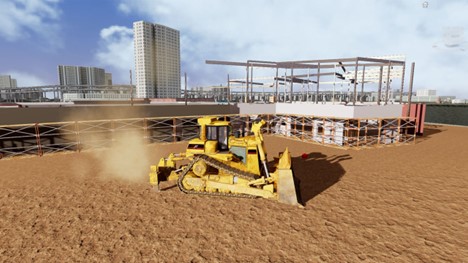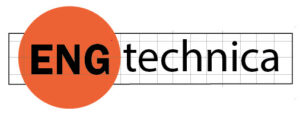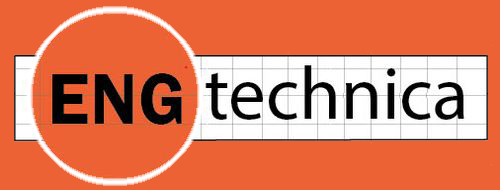
Amongst all the booths on the show floor at Bentley Systems Year in Infrastructure, one was getting a lot of attention. Happy customers were dropping by the Fuzor exhibit to shake hands and give thanks. This was no startup looking to get noticed. This was a company that had already arrived. I had some catching up to do.
It turns out Fuzor is a comprehensive virtual design and construction (VDC) software purpose-built for animating every bit of the construction before it takes place.
Use it on the job or before to get the job.
“We found that firms are using Fuzor to win contracts,” says Pat Argiles, VDC Accounts Manager at Fuzor, “who proceeded to open my eyes with what all that Fuzor can do, showing exactly how the dig, grading, construction, complete with earth moving equipment and cranes, is going to happen. Getting the job after seeing this careful preparation would be a slam dunk for any construction firm. Then, after they get the job, construction firms can commence with the work, all sequencing neatly orchestrated, with little left to chance.
With Fuzor, contractors can see animations of equipment moving in and moving about, dirt being dug, and cranes hoisting steel… all of it in 3D. There could be no better big-picture guide on how to get from brownfield to high rise – or whatever building or structure is going up.
We see 3D earthmovers and cranes in operation. They, and much more equipment, have been modeled and are available in a library.
Fuzor has a suite of advanced features for architects, engineers, and project managers. At its core, Fuzor provides 4D simulation (the 4th dimension, time, so animation) so construction firms can create construction sequences over time by integrating building information models (BIM) with scheduling data. This dynamic simulation allows stakeholders to foresee how projects will progress day by day, enabling them to plan logistics, manage resources, and prevent delays.
Fuzor enters yet another dimension: 5D, which adds cost data to the model. You can use it to track the financial impact of scheduling decisions in real-time.
You can check out a project in virtual reality (VR). Fusor’s integration creates an immersive environment where team members can explore the project as if it were already built, aiding in design reviews and stakeholder presentations. This realistic experience enhances communication, ensuring everyone has a clear understanding of the project.
Fuzor is not just about building; it can be used for civil infrastructure projects, with animations of roads, bridges, and tunnels, incorporating material properties and environmental conditions. Urban planners can get into it, too, for land use, transportation systems, and city planning scenarios, facilitating sustainable development.
What Makes Fuzor Different?
Fuzor distinguishes itself from other VDC software in several key ways:
- Real-Time Rendering and Immersive Visualization: Fuzor provides real-time rendering, allowing users to make changes to models and instantly see their impact. This includes integration with virtual reality (VR), giving stakeholders a highly immersive experience where they can walk through and interact with models.
- 4D and 5D Simulations: Unlike some VDC tools that focus primarily on 3D models, Fuzor incorporates both time (4D) and cost (5D) simulations. This feature allows users to visualize not just the building’s design but also the construction process over time and its financial implications.
- Advanced Collaboration Tools: Fuzor enables multiple stakeholders to work simultaneously on a project in real time. This collaborative approach ensures that architects, engineers, contractors, and clients stay aligned throughout the project lifecycle, improving communication and reducing errors.
- Microtask Planning and AI Automation: Fuzor’s microtask planning enables detailed site activity simulations, while its AI-driven automation simplifies linking 3D models to schedules. These features reduce manual workload and improve accuracy by ensuring that schedules and designs remain in sync in real-time.
- Civil Engineering and Urban Planning: In addition to its architectural capabilities, Fuzor is widely used in civil engineering and urban planning. It allows users to simulate the structural behavior of complex infrastructure like roads and bridges, making it versatile for both building and infrastructure projects.
The Fuzor Story
Fuzor was developed by Kalloc Studios, a company founded by Henry Yu in 2006. Initially, Kalloc focused on game development, working with major game companies like Electronic Arts and THQ. Yu may have tired of Grand Theft Auto, inventing more ways of killing people, and wished to do something more constructive. Yu and his team transitioned to the architecture, engineering, and construction (AEC) industry, leveraging their gaming expertise to create high-performance visualization tools.
Fuzor was officially launched in 2014, emerging from Kalloc’s Instant Preview Engine technology, initially designed for game designers. Fuzor’s core mission is to integrate real-time rendering and 4D/5D simulations with BIM tools, enhancing project planning, design, and collaboration in construction. It allows users to visualize complex designs, simulate construction sequences, and track costs over time, all within a virtual reality (VR) environment.
Kalloc Studios’ headquarters are located in Carlsbad, California (famous for another construction company, though it is with little plastic bricks), with additional offices in Hong Kong.
Find out more about Fuzor here.
—–

